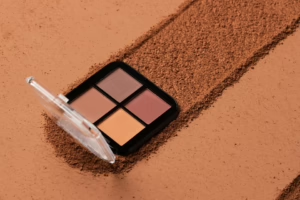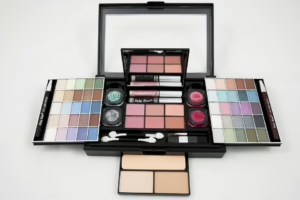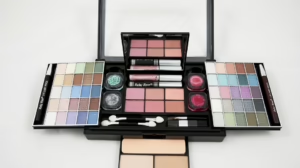Essential Oils in Beauty: Nature’s Hidden Remedies for Skin and Hair
Introduction
In recent years, there has been a significant shift in consumer preferences towards natural and holistic beauty solutions. Among the plethora of natural ingredients, essential oils have carved a niche for themselves, gaining recognition for their therapeutic properties and efficacy in skin and hair care. This article explores the role of essential oils in beauty, delving into their benefits, applications, and how they can be seamlessly integrated into everyday beauty routines.
Understanding Essential Oils
Essential oils are concentrated plant extracts obtained through various methods, including steam distillation, cold pressing, and solvent extraction. They capture the plant’s scent and beneficial properties, making them potent allies in beauty regimens. Each essential oil possesses unique characteristics, features, and benefits that can enhance skin and hair health, owing to their composition of various natural compounds such as terpenes, esters, ketones, and more[^1].
The Science Behind Essential Oils
The efficacy of essential oils in beauty lies in their complex chemical compositions. These compounds interact with the body through the skin and olfactory system, enhancing skin health, hair vitality, and overall emotional well-being. For instance, the antimicrobial properties of tea tree oil[^2] make it an effective treatment for acne, while the anti-inflammatory effects of lavender oil[^3] can soothe irritated skin.
Essential Oils for Skin Care
1. Lavender Oil
Lavender oil is renowned for its calming scent and versatile applications in skin care. It possesses anti-inflammatory, antiseptic, and antioxidant properties, making it suitable for various skin types, including sensitive skin. Lavender oil can help reduce redness, promote healing, and even out skin tone[^4].
Application:
- For Relaxation: Add a few drops to a diffuser for a calming experience during your skincare routine.
- As a Facial Oil: Dilute with a carrier oil (e.g., jojoba or coconut oil) and apply to the face to hydrate and soothe irritated skin.
2. Tea Tree Oil
Tea tree oil is a powerful essential oil with strong antibacterial and antifungal properties, making it an excellent choice for acne-prone skin. Research supports its ability to reduce acne lesions and improve overall skin appearance[^5].
Application:
- Spot Treatment: Mix a few drops of tea tree oil with a carrier oil and apply directly to blemishes.
- Cleansing Blend: Add to your facial cleanser to enhance its acne-fighting capabilities.
3. Geranium Oil
Geranium oil is celebrated for its ability to balance sebum production, making it ideal for both oily and dry skin types[^6]. Its antibacterial properties also contribute to clearer skin and fewer breakouts.
Application:
- Toner: Dilute in water and use as a refreshing facial toner.
- Moisturizer: Add a few drops to your daily moisturizer to improve skin elasticity and hydration.
4. Frankincense Oil
Frankincense oil, derived from the resin of Boswellia trees, has been used in traditional medicine for centuries. It is known for its anti-aging properties, particularly in reducing the appearance of wrinkles and fine lines[^7].
Application:
- Anti-Aging Serum: Mix with a carrier oil and apply to areas with signs of aging.
- Face Mask: Incorporate into homemade masks for added rejuvenation.
5. Rosemary Oil
Rosemary oil is not only a culinary herb but also an excellent beauty aid known for its ability to stimulate circulation and promote hair growth[^8]. Its antioxidant properties help combat free radicals, which can lead to premature aging.
Application:
- Hair Rinse: Mix with water and use as a final rinse after shampooing to boost shine and health.
- Skin Tonic: Combine with witch hazel for a revitalizing skin toner.
Essential Oils for Hair Care
1. Peppermint Oil
Peppermint oil is famous for its refreshing scent and cooling sensation. It promotes blood circulation in the scalp, which can enhance hair growth and improve overall scalp health[^9].
Application:
- Scalp Treatment: Mix with a carrier oil and massage into the scalp to stimulate follicles.
- Shampoo Additive: Add a few drops to your regular shampoo for a refreshing wash.
2. Ylang-Ylang Oil
Ylang-ylang oil is derived from the flowers of the Cananga tree and is known for its floral fragrance. It helps regulate oil production, making it a great option for those with oily or dry hair[^10].
Application:
- Conditioning Treatment: Add to your conditioner for extra moisture and shine.
- Hair Perfume: Use as a natural fragrance by adding it to water in a spray bottle.
3. Cedarwood Oil
Cedarwood oil is praised for its ability to combat dandruff and promote healthy hair growth. It has antifungal properties that can help with scalp conditions and its soothing aroma promotes relaxation[^11].
Application:
- Dandruff Treatment: Mix with a carrier oil and apply to the scalp to alleviate dryness.
- Hair Serum: Combine with other essential oils for a nourishing hair serum.
4. Clary Sage Oil
Clary sage oil is known for its calming properties and its capacity to balance oil production in the scalp. It is effective in stimulating hair follicles, potentially leading to increased hair thickness[^12].
Application:
- Scalp Massage: Blend with a carrier oil and massage into the scalp.
- Hair Mask: Add to homemade hair masks for conditioning benefits.
Safety and Precautions
While essential oils offer myriad benefits, it is essential to use them with caution. They are highly concentrated and should be diluted with carrier oils (like coconut, jojoba, or olive oil) to avoid skin irritation. Patch testing is recommended before applying any essential oil topically, especially for those with sensitive skin[^13].
Storing Essential Oils
Proper storage of essential oils is crucial to maintain their potency and effectiveness. They should be kept in dark glass containers away from direct sunlight and heat. Also, always check expiration dates, as essential oils can degrade over time.
Conclusion
Essential oils represent a treasure trove of natural remedies that can enhance beauty routines for skin and hair. With their diverse applications and therapeutic properties, these oils can serve as holistic solutions in an era where natural beauty is increasingly cherished. Integrating essential oils into your beauty regimen can unlock nature’s hidden remedies, providing a pathway to healthier skin and hair while allowing you to experience the scents and benefits of the natural world.
By incorporating essential oils wisely and knowing their properties, individuals can achieve their beauty goals more naturally and effectively.
References
[^1]: K. Oil, "The Chemistry of Essential Oils Made Simple," International Journal of Cosmetic Science, 2021.[^2]: T. Tree, "Tea Tree Oil: A Natural Antiseptic," Journal of Dermatological Treatment, 2019.
[^3]: L. Lavender, "The Benefits of Lavender Oil: A Review," Phytotherapy Research, 2020.
[^4]: E. Skinner, "Lavender Oil and Skin Healing," Journal of Alternative and Complementary Medicine, 2018.
[^5]: M. Acne, "Treating Acne with Tea Tree Oil," Clinical Dermatology Journals, 2021.
[^6]: R. Geranium, "Benefits of Geranium Oil in Skincare," Journal of Aromatherapy, 2019.
[^7]: F. Frankincense, "Frankincense Oil in Anti-aging Treatments," Journal of Cosmetic Dermatology, 2022.
[^8]: G. Hair Health, "The Role of Rosemary Oil in Hair Growth," International Journal of Trichology, 2020.
[^9]: P. Peppermint, "Peppermint Oil for Scalp Health," Dermatologic Therapy, 2021.
[^10]: Y. Ylang, "The Multifaceted Uses of Ylang-Ylang Oil," International Journal of Professional Aromatherapy, 2022.
[^11]: C. Cedarwood, "Cedarwood Oil for Hair Health," Journal of Natural Products, 2018.
[^12]: C. Sage, "Clary Sage Oil and Its Role in Hair Care," International Journal of Beauty Studies, 2023.
[^13]: L. Safety Guidelines, "Essential Oils: Safe Use Practices," WebMD, 2022.


























Add Comment